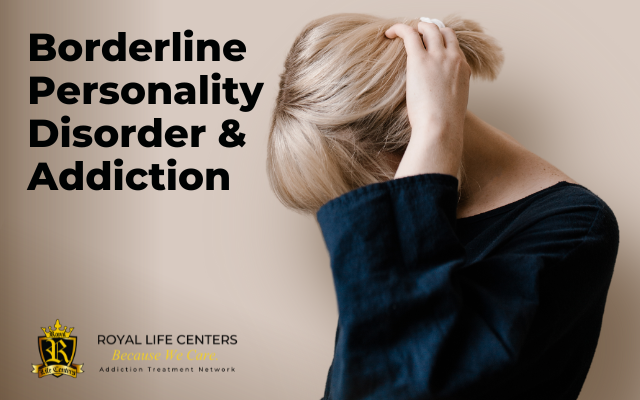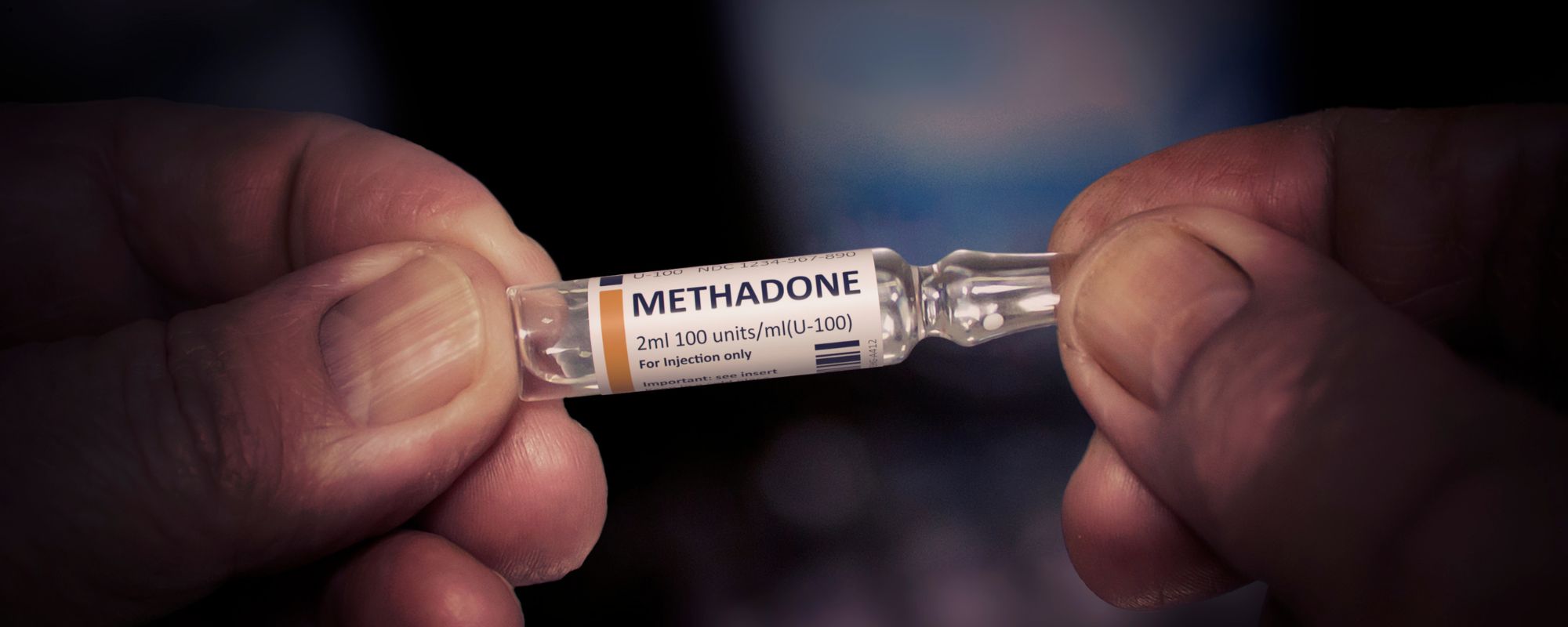What is Borderline Personality Disorder?
Borderline personality disorder (BPD) is a complex mental health condition that can look different from one person to the next. As a personality disorder, BPD has a wide range of symptoms. Sometimes it’s obvious that an individual has BPD, while other times, you may have no idea that they struggle with this condition.
People who suffer from untreated BPD are incredibly susceptible to the negative effects of stress. For example, they may struggle to self-soothe in situations that trigger their fight-flight-freeze-fawn response. The severity of their negative response relates to a lack of stress management and emotional regulation. People with BPD can maintain a calm demeanor for a lengthy amount of time. However, they crash hard and fast once they reach their emotional breaking point. This is especially dangerous for people with borderline personality disorder who also struggle with substance abuse. Not only can their drug and alcohol abuse worsen in times of stress, but an intense period of stress for those in recovery may cause a relapse.
Signs and Symptoms of Borderline Personality Disorder
According to the DSM-5, or The Diagnostic and Statistical Manual of Mental Disorders, Fifth Edition, borderline personality disorder (BPD) is characterized by hypersensitivity to rejection and resulting instability of:
- Interpersonal relationships
- Self-image
- Affect (feelings, emotions, and mood)
- Behavior
The DSM-5 is one of the standard handbooks that clinicians and other medical professionals use to identify and diagnose mental illness.
The DSM-5 outlines the symptoms of borderline personality disorder as:
- Frantic efforts to avoid real or imagined abandonment.
- A pattern of unstable and intense interpersonal relationships. An individual with BPD may alternate between extremes of idealization and devaluation — also known as splitting.
- Example: They say, “You are my favorite person” one moment, but can quickly switch to, “I hate you” following an argument.
- Identity disturbance: Unstable self-image or sense of self.
- Example: They love themselves one minute and hate themselves later in the day.
- Impulsivity in at least two areas that are potentially self-damaging. Examples may include:
- Spending money
- Reckless sex
- Substance abuse
- Reckless driving
- Binge eating
- Rapid and intense mood swings that last a few hours and rarely more than a few days. This period of mood instability may include:
- Recurring and intense dissatisfaction
- Anxiety
- Irritability
- Chronic feelings of emptiness.
- Inappropriate, intense anger, or difficulty controlling anger. Examples may include:
- Frequent displays of temper
- Constant anger
- Recurrent physical fights
- Transient paranoid ideation or severe dissociative symptoms.
- Short-lasting paranoid thoughts triggered by stress.
- Example: Thinking that others may be trying to hurt them emotionally or physically.
- Short-lasting dissociation triggered by stress.
- Example: Feeling spaced out, unattached or numb to emotions, or detached from self.
According to NAMI, roughly 1.6% of the adult U.S. population has BPD but it may be as high as 5.9%. Nearly 75% of BPD diagnoses are given to women, but recent research suggests that men may be equally affected. The large gap in male BPD diagnoses seems to result from misdiagnosing men with PTSD or depression.
What Are the Causes of Borderline?
The causes of borderline personality disorder are not fully understood, but research agrees that the disorder is a product of a combination of factors.
Similar to other mental health disorders, BPD is linked to:
- Genetics
- Environmental factors
- Brain function
Genetics
Genetics plays a significant role in many physical and mental health conditions, including borderline personality disorder. While no specific gene or set of genes has been identified as the direct cause, studies suggest a hereditary link. In fact, BPD is five times more common in people who have immediate family members with borderline personality disorder.
Environment
Just as genetics may influence a person’s likelihood of developing BPD, so can their environment. Individuals who experience childhood trauma from physical, sexual, or emotional abuse are more likely to develop BPD. Additionally, physical or emotional neglect and separation from parents can lead to borderline personality disorder.
Brain Function
The way the brain works is often different in people with BPD. Their brain can struggle with emotional regulation, which suggests a neurological cause. Moreover, the brain region that controls emotions, decisions, and judgment, is seemingly impaired for people with borderline.
What Factors of BPD can Lead to Addiction?
According to one German study, 2.7% of adults have borderline personality disorder, and substance abuse is very common in people with BPD. The study focused on the relationship between BPD and co-occurring substance use and found that 78% of people with BPD develop a substance use disorder or addiction in their lifetime.
The BPD traits linked to dependence and addiction may include:
- Increased impulsivity
- Heightened risk-taking
- Emotional instability
- Lack of stable self-image
- Maladaptive self-soothing behaviors
- Irrational thought patterns and psychosis
Due to the impulsive nature of BPD, individuals may abuse substances for a thrill during a period of emptiness. They may also turn to substances to self-soothe in times of great emotional distress. Regardless of the initial motivation, people with BPD will often display higher rates of impulsivity and a decline in mental health.
In essence, once a person with BPD begins taking an addictive substance, they are more likely to spiral. This spiral may involve:
- Dependence
- Risk-taking
- Emotional instability
- Psychosis
- Suicidal behaviors
This is why co-occurring borderline personality disorder and substance abuse requires specific treatments tailored toward BPD.
The Risks of Medication Dependence in Borderline Personality Disorder
People with borderline personality disorder often struggle with co-occurring mental health disorders like anxiety and depression. If they’re in psychiatric care, they may receive anxiolytics to treat the symptoms of anxiety that can come with BPD. While they can be prescribed to prevent or treat anxiety, anxiolytics have health risks. More specifically, anxiolytic medications such as benzodiazepines and barbiturates are habit-forming and may lead to a substance use disorder. While medications can relieve symptoms from co-occurring disorders, studies show that nearly 50%of people with BPD are likely to report a history of prescription drug abuse.
For instance, a person with BPD may experience less anxiety when they take a benzodiazepine. On the flip side, they may begin to report new problems in light of their new anxiety-free mentality. Without clinical guidance, the anxiety-related symptoms that previously prevented rash decision-making are suppressed. This may cause an increase in impulsive behavior. On top of this, their risky behavior may lead to dependency or addiction to their medication.
Paranoia and Fear
Those with BPD struggle to maintain a consistent, healthy self-image. This is why many who struggle with addiction find themselves in a cycle of sobriety followed by a relapse.
Entering into substance abuse treatment forces an individual to face their current circumstances without numbing them with drugs or alcohol. It is important for those with SUDs to face the truth in order to be fully honest with themselves. That being said, once a person has removed substances from their lives, the reality of their situation can trigger a lot of anxiety. For those with BPD, losing a sense of self can result in a debilitating emotional response that may rapidly decrease their control over thoughts and actions.
Overwhelmed and afraid, many with borderline personality disorder find their emotions continue to escalate and they become incapable of accurately understanding the motivates of other people in treatment and staff. As their paranoia and fear grow, they begin to doubt the behaviors and words of those around them. This makes everyone a potential threat. Unfortunately, without the proper care, many who struggle with borderline personality disorder end up leaving treatment against medical advice.
The Impacts of Psychosis and Shame
In one study of people with BPD, 20-50% of participants reported psychotic symptoms. It is important to note that psychotic symptoms, especially hallucinations, are a key feature of BPD and are common in those who have experienced childhood trauma and neglect. In fact, BPD hallucinations can be similar to the experiences of people with psychotic disorders in terms of presentation, emotional impact, and persistence.
While the exact nature of psychotic events in BPD is unknown, it is essential to avoid diminishing or dismissing the negative impact these episodes have on the individual. Acknowledging the mental and emotional impacts of a psychotic episode is incredibly important when reassuring a person with BPD. This is especially significant due to the highly sensitive nature of a borderline mind, which is even more vulnerable to fears of rejection and abandonment following the loss of control during a series of hallucinations.
Treatment for Addiction and BPD
In order to treat individuals with both a substance use disorder and borderline personality disorder, it is important to develop an individualized treatment plan (ISP). Individualized treatment plans take into account the complex nature of each person’s unique experience. Moreover, each ISP is a collaborative process between the guest and their medical team.
Upon entering one of our programs at Royal, you will complete a:
- Substance use disorder assessment
- Clinical evaluation
- Documentation of your medical history
This process is grounded in a bio-psycho-social-spiritual approach to ensure our medical staff has a full understanding of your unique situation. Assessments and evaluations can help identify the extent of your current mental health issues and how best to develop a dual diagnosis treatment plan.
Our staff pays special attention to mental and physical symptoms to assess the presence of borderline disorder and any other mental health conditions you may be struggling with alongside an addiction. This way your personal care team can build out the best dual diagnosis treatment plan for your stay with us.
Dual Diagnosis Treatment for Borderline Personality Disorder and Addiction
Dual diagnosis, also known as co-occurring disorders, is when a person has a substance use disorder that coincides with one or more mental health disorders. An accurate dual diagnosis treatment plan is a key component in the treatment of borderline personality disorder and addiction.
In fact, the NCBI’s continuing education activity for BPD recorded the presence and frequency of co-occurring mental health disorders in people with borderline personality disorder. The study identified seven categories of mental conditions that commonly co-occur in individuals with borderline personality disorders:
- Mood disorders — 80%-96%
- Anxiety disorders — 88%
- Substance use disorders — 64%
- Eating disorders — 53%
- ADHD — 10%-30%
- Bipolar disorder — 15%
- Somatoform (psychosomatic) disorders — 10%
Not only is dual diagnosis treatment important for people with BPD and substance abuse, but it also helps us identify and treat other mental health conditions they have. This is key to their recovery since borderline personality disorder regularly co-occurs with other disorders. Treating all co-existing health conditions during treatment is vital to a successful recovery.
Typically, people with BPD receive a combination of treatments including:
- Individual therapy
- Group therapy
- Medication management
Medication in the Treatment of Addiction and BPD
During SUD treatment, medications for a co-occurring BPD diagnosis do not specifically treat the symptoms of borderline. Unfortunately, feelings of emptiness, abandonment, and identity disturbance cannot be treated with medication. In fact, there is no medication approved by the US Food and Drug Administration (FDA) for the treatment of BPD. There is very limited data for any single medication that successfully improves the severity of BPD and its symptoms. More often than not, people with BPD are treated with medications targeting the symptoms of co-occurring disorders like depression and anxiety.
With that said, the medications used in and after treatment can be useful in treating other symptoms associated with BPD, such as anxiety, depression, and anger. For instance, psychiatrists commonly prescribe:
- Mood stabilizers
- Antidepressants
- Anti-anxiety drugs
- Antipsychotics
These medications can help mitigate overwhelming emotions from BPD, thus making it easier for them to manage intrusive thoughts and feelings as they recover from substance use.
The Importance of Medication Management for Co-Occurring BPD
Treating people with borderline personality disorder can be challenging, considering the wide range of symptoms associated with it. Some people who struggle with BPD may require medical attention for psychosis while others may need treatment for depression.
On top of this, the emotional state of a person with BPD must be taken into consideration when providing medication due to its immense influence on their reactions. For example, if a person begins a medication during a time of positivity, a medical professional may believe they have landed on the correct treatment. If, however, the next month they take a turn for the worse and the medication provides no relief, the clinician may come to find the medication was simply providing a placebo effect that wavered under stress.
Some research has highlighted the prevalence of the placebo effect on people with BPD. In fact, it is common for people who have BPD to experience a strong placebo response to medication. They will often experience impressive short-term improvement when first put on medication, but the positive effects may unexpectedly fade once they experience higher levels of stress.
This is why medication management is essential in the treatment of borderline and addiction. Having a team of medical professionals who are qualified, attentive, and compassionate can make the difference between recovering in treatment or leaving against medical advice due to incorrect medication.
Treating Addiction and BPD in Therapy
Behavioral therapy is a centerpiece for treating BPD. Also, many people who struggle with borderline personality also have additional mental health conditions, making it even more important to address all co-occurring disorders in therapy.
The most common form of therapy used in treating BPD is dialectical behavioral therapy (DBT). In fact, DBT was created specifically for the treatment of BPD. It’s a combination of other evidence-based therapies and skill-building to create lasting change. Royal offers DBT techniques in our individual and group therapy sessions to help our guests develop:
- Mindfulness,
- Interpersonal skills
- Emotional regulation
- Distress tolerance
In addition to DBT, there are several types of therapy that are effective for treating addiction and BPD including cognitive behavioral therapy (CBT) and mentalization-based therapy (MBT).
Building a foundation based on a stable sense of self in group therapy is paramount to our guest’s success in treatment. Those with BPD struggle to maintain a consistent, healthy self-image, which is why participation in therapy can provide the skills needed to recover.
If you struggle with borderline personality disorder, you and your therapist will work on strengthening your tolerance to distress, regulating your emotions, and creating effective strategies for controlling your thoughts and feelings. This is incredibly important because it provides you with the knowledge and skills to remain mindful of the present moment and prevents emotions from controlling your actions.
Entering Treatment at Royal for Borderline Personality Disorder and Substance Use Disorder
At Royal Life Centers, all of our guests receive 24/7 medical care within our inpatient programs. This allows our team of nurses, therapists, and doctors to perform regular check-ins with them. We value consistency because it ensures that our guests are safe, comfortable, and receiving the most effective care.
It is our mission to provide the treatment services best suited for you and your needs. We will work with you to develop an individualized treatment plan with a focus on both borderline personality disorder and substance use disorder.
Reach Out
If you or a loved one is struggling with substance abuse, please feel free to reach out to us at 877-RECOVERY. Our addiction specialists are available 24/7 to assist you through this time and help you find hope in recovery.













